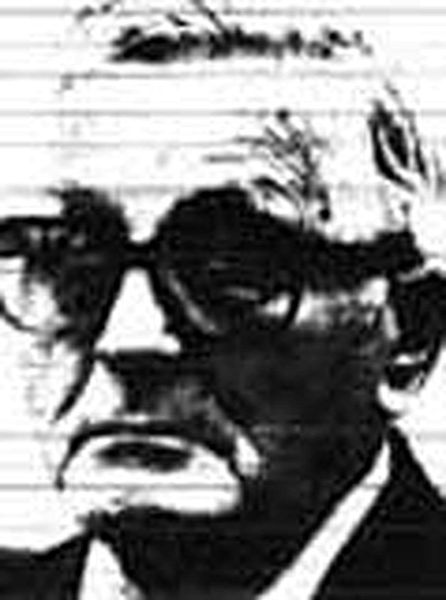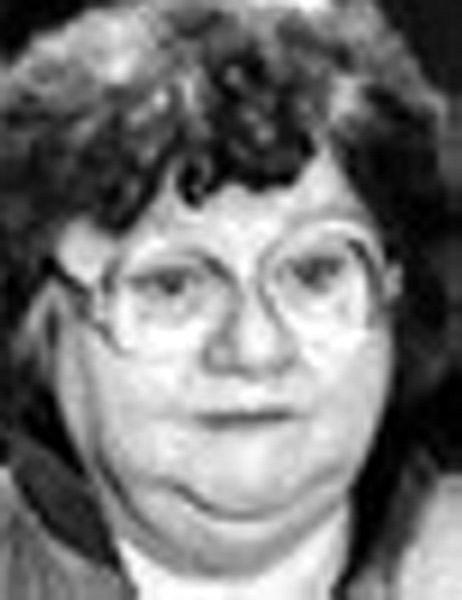Missing Person Photos
A missing person is a person who has disappeared and whose status as alive or dead cannot be confirmed as their location and condition are unknown. A person may go missing through a voluntary disappearance, or else due to an accident, crime, death in a location where they cannot be found (such as at sea), or many other reasons. In most parts of the world, a missing person will usually be found quickly. While criminal abductions are some of the most widely reported missing person cases, these account for only 2 to 5 percent of missing children in Europe.
By contrast, some missing person cases remain unresolved for many years. Laws related to these cases are often complex since, in many jurisdictions, relatives and third parties may not deal with a person's assets until their death is considered proven by law and a formal death certificate issued. The situation, uncertainties, and lack of closure or a funeral resulting when a person goes missing may be extremely painful with long-lasting effects on family and friends.
A number of organizations seek to connect, share best practices, and disseminate information and images of missing children to improve the effectiveness of missing children investigations, including the International Commission on Missing Persons, the International Centre for Missing & Exploited Children (ICMEC), as well as national organizations, including the National Center for Missing & Exploited Children in the US, Missing People in the UK, Child Focus in Belgium, and The Smile of the Child in Greece.

Resources for Missing Persons
According to current statistics, 4,000 people in the United States go missing every day.
Sometimes a child suddenly vanishes from the bus stop or the local park or even from their own yard or bedroom. Or a teenager doesn�t return home after a walk to the neighborhood grocery store or a bike ride or a party with friends.
Other times, an adult is mysteriously absent from their job or neighbors haven�t seen them for several days, and family and friends haven�t heard from them either.
Missing Person Photos
Rolf Neslund


Rolf, date, approximate 1980; Nettie "Ruth" Neslund, date, approximate 1983
Date Missing 08/01/1980
Missing From
Lopez Island, Washington
Missing Classification Endangered Missing
Sex Male
Race
White
Date of Birth 11/04/1900 (121)
Age 79 years old
Height and Weight Unknown
Medical Conditions Rolf suffers from type II diabetes and was prescribed the drug Orinase to regulate his condition. He was otherwise in excellent physical and mental health prior to his disappearance.
Markings and/or Distinguishing Characteristics Caucasian male. Gray hair. Rolf is a native of Norway. He may use the alias date of birth July 7, 1897. He has the following tattoos: a heart with an arrow and the name "Muriel" on his right forearm, a Coast Guard insignia or American flag on his left forearm, and an arrow around the middle finger of his right hand. Rolf wears prescription eyeglasses and a full set of dentures. He is bowlegged and has very muscular arms. He has a split diaphragm from an injury he sustained in his youth, and he may have once broken two fingers. His blood type is A-positive.
Details of Disappearance Rolf was last seen sometime during August 1980. He lived with his wife, Nettie Ruth Neslund, who was addressed by her middle name, on Lopez Island in Washington. A photograph of Ruth is posted with this summary.
The Neslunds' marriage was troubled. Both Ruth and Rolf drank heavily and they often had violent physical altercations, resulting in injuries and property damage. The police had been summoned to their home several times to break up fights. Rolf generally sustained more injuries than Ruth did.
In February 1981, Rolf's friends asked police to check up on his welfare, as they had not heard from him in months. Investigators went to his residence and spoke to Ruth. She told them Rolf had left her on August 14, 1980. The last time anyone other than Ruth saw him was on August 5. She stated she assumed he had run away with his former girlfriend, Elinor Ekenes.
Rolf had two adult sons by Ekenes, and he and Ekenes remained friends after their romance ended. Ruth believed Rolf was having an affair with Ekenes, and speculated they had gone to Norway where Rolf was born. Ruth stated she had gone to Norway in October 1980 to look for Rolf, but later she admitted this statement was untrue.
Ekenes did travel to Norway in 1980, but not with Rolf; she had just gotten married and went to Norway with her husband on their honeymoon.
Ruth stated that Rolf packed up his bags and drove away from their residence in his car. The car turned up abandoned at the ferry in Anacortes, Washington. There were no indications of foul play at the scene and investigators were never able to determine who drove it to the ferry dock.
Authorities were suspicious of Ruth's story and did not believe Rolf had left of his own accord. He left behind all his possessions, including his clothing, jewelry, wristwatch, eyeglasses, cars, money and medication. He never contacted his doctor to ask for his prescription to be renewed. He also did not contact any of his friends or relatives after his disappearance, which is extremely uncharacteristic of him.
Rolf mailed Christmas cards to dozens of loved ones every year, but none of his associates got a card from him at Christmas in 1980 or any year after that. He had money in American and Norwegian bank accounts, but did not try to access any of the accounts after August 1980.
Only days after his disappearance, Ruth put several of his belongings, including two cars, up for sale. In December 1981, Ruth was declared trustee of Rolf's estate during his absence, over the objections of his sons. She turned their home into a popular bed and breakfast, the Alec Bay Inn.
Rolf formerly worked as a ship's pilot and was a well-known figure in the Seattle area. He emigrated to the United States as a teenager and eventually obtained citizenship, although he continued to visit Norway regularly throughout his life and he maintained close contact with his siblings there.
Rolf was involved in a serious shipping accident in 1978, while piloting the forty-ton, 550-foot ship Chavez. The Chavez crashed into the support pillars of the West Seattle Bridge. No one was killed, but the bridge was destroyed.
Rolf was permitted to retire without censure two weeks later, but the incident tarnished his reputation. His loved ones stated he did not appear to be distressed about the bridge accident and even joked about it. He retired on a pension of $1,800 a month from the Puget Sound Pilots Association.
Shortly before his disappearance, Rolf discovered Ruth, who had power of attorney and handled all their finances, had taken nearly $80,000 of his money out of their joint bank accounts and transferred it to accounts which were in her name only. She had also told him that various loans they had given to friends and acquaintances were still outstanding when they had, in fact, been paid off years before.
Rolf was very angry about the situation and told his friends he planned to revoke Ruth's power of attorney and change his will, disinheriting Ruth and naming his sons as the sole beneficiaries of his estate. When he spoke to Ekenes about the will, he said he was afraid Ruth was going to poison him. He asked Ekenes to make sure, if he died, that his body would be autopsied.
Police searched the Neslund home for evidence in April 1981, but located little evidence. Some of her relatives contacted investigators, however, and stated they had often heard Ruth threaten to murder Rolf. She was usually intoxicated when she made those statements, and none of her family members gave them much credence until Rolf went missing.
In 1982, Ruth's brother, Paul Myers, told police that Ruth had confessed Rolf's murder to him. She said her brother, Robert Myers, was at the residence that night, and Robert held Rolf while Ruth shot him twice in the head. Afterwards Robert dismembered his body in the bathtub and he and Ruth burned it in a barrel and dumped the ashes in the manure pile.
Based on Paul's statements, authorities obtained a second search warrant for the Neslund home. Ruth had replaced sections of carpet in one of the rooms; when the new carpet was cut away, bloodstains were visible on the padding and the floor underneath. Blood was also found on the ceiling of the room, and in the hallway outside.
There was enough blood to indicate someone had been seriously injured or killed. A blood spatter expert determined that the stain on the ceiling was high-velocity spatter, which is typically the result of a gunshot wound. Some blood traces were also found on the shower doors in the master bathroom.
DNA testing did not exist at the time, but investigators were able to determine that the blood was human and Type A. Rolf had Type A blood, and so did Ruth.
Several guns were located in the residence. One of them, a .38 caliber Smith and Wesson revolver found inside Ruth's dresser, was bloodstained.
Ruth was charged with her husband's murder in March 1983. There were many delays in the proceedings, partly due to Ruth's health problems; she had to be hospitalized for high blood pressure before the trial and also suffered an episode of delirium tremens. She did not go to trial until October 1985.
The prosecution theorized that when Rolf confronted Ruth about the stolen money, she and her brother Robert shot him and disposed of his body. (Robert was suffering from advanced dementia in 1985 and lived in a nursing home. Due to incompetency, he never faced charges for his alleged role in the .)
Several of Ruth's friends and relatives testified that she had made statements about shooting Rolf after his disappearance, but because she was always drunk at the time she said those things, no one took her seriously.
The defense suggested Rolf had left of his own accord and possibly traveled to Norway, or that he had committed suicide because he was despondent about the West Seattle Bridge accident and the end of his career.
Ruth's attorney said the bloodstains in the Neslund home did not constitute proof of murder and could have been the result of home improvement accidents, Ruth's nosebleeds, and the couple's numerous fights before Rolf went missing.
The jury convicted Ruth of first-degree murder and she was sentenced to 20 years to life in prison. Initially freed on bail while her was under appeal, but she was ordered to start serving her sentence after she drove while intoxicated and caused an accident, seriously injuring two bicyclists.
Ruth died in prison in 1993, at the age of 73, seven years into her sentence. Her health in prison was always poor, and in 1992 she was diagnosed with lung cancer. The authorities were considering granting her early release for medical reasons, but she died before the Board of Clemency and Pardons could hold a formal hearing on the matter. Ruth maintained her innocence in Rolf's until the last.
Rolf's body has never been located. His the first in Washington state history where a defendant was convicted of murder without the victim's body.
The true crime author Ann Rule wrote about the Neslund in her 2006 book, No Regrets: and Other True s. Rod Englert, a blood spatter expert, also profiled the in his 2010 memoir, Blood Secrets: Chronicles of a Crime Scene Reconstructionist.
Investigating Agency
San Juan County Sheriff's Office
360-378-4101
Other
No Regrets: and Other True s
The History Link
Blood Secrets: Chronicles of a Crime Scene Reconstructionist
The Seattle Post-Intelligencer
The Seattle Metropolitan
Investigation Discovery
Missing Person Photos
A missing person is a person who has disappeared and whose status as alive or dead cannot be confirmed as their location and condition are unknown. A person may go missing through a voluntary disappearance, or else due to an accident, crime, death in a location where they cannot be found (such as at sea), or many other reasons. In most parts of the world, a missing person will usually be found quickly. While criminal abductions are some of the most widely reported missing person cases, these account for only 2 to 5 percent of missing children in Europe.
By contrast, some missing person cases remain unresolved for many years. Laws related to these cases are often complex since, in many jurisdictions, relatives and third parties may not deal with a person's assets until their death is considered proven by law and a formal death certificate issued. The situation, uncertainties, and lack of closure or a funeral resulting when a person goes missing may be extremely painful with long-lasting effects on family and friends.
A number of organizations seek to connect, share best practices, and disseminate information and images of missing children to improve the effectiveness of missing children investigations, including the International Commission on Missing Persons, the International Centre for Missing & Exploited Children (ICMEC), as well as national organizations, including the National Center for Missing & Exploited Children in the US, Missing People in the UK, Child Focus in Belgium, and The Smile of the Child in Greece.

Resources for Missing Persons
According to current statistics, 4,000 people in the United States go missing every day.
Sometimes a child suddenly vanishes from the bus stop or the local park or even from their own yard or bedroom. Or a teenager doesn�t return home after a walk to the neighborhood grocery store or a bike ride or a party with friends.
Other times, an adult is mysteriously absent from their job or neighbors haven�t seen them for several days, and family and friends haven�t heard from them either.
Missing Person Photos